Peru is an extraordinary travel destination. With this Peru itinerary, you can visit the historic city of Cusco, tour several small towns in the Andes Mountains, walk on the famous Inca trail, spend a day at magical Machu Picchu, and even explore the steamy Amazon jungle.
Peru still remains one of our favorite travel destinations. It’s a fabulous mix of history, outdoor adventures, dramatic landscapes, and culinary delights.
Before traveling to Peru, Tim and I put tons of research into the best things to see and do in this diverse country. The result was this itinerary, our exact route through Peru. This is probably the best 10 day trip we have ever taken, and that is saying a lot. It was adventure after adventure, with 10 days of thrills, new travel experiences, and unforgettable moments.
I hope you enjoy Peru as much as we did. And if you are like us, you will be dreaming about returning again someday.
10 Day Peru Itinerary
Day 1: Arrive in Lima
Day 2: Cusco and the Sacred Valley
Day 3: Cusco and the Sacred Valley
Day 4: Inca Trail to Machu Picchu
Day 5: Machu Picchu
Day 6: Zip-Lining in the Sacred Valley
Day 7: Mountain Biking in the Sacred Valley or Visit the Rainbow Mountain
Day 8: Amazon
Day 9: Amazon
Day 10: Fly Home
10 Day Peru Itinerary Day 1
Arrive in Lima
Most international flights to Peru arrive in Lima, the capital city.
Our flight arrived at 9 pm, so we simply went to our hotel, slept, and went right back to the airport the following morning to fly to Cusco.
If you arrive midday, you have the option to spend the afternoon touring Lima, or you could catch a flight and continue on to Cusco, the choice is yours.
If you plan to see a little bit of Lima, the best spot to go is Miraflores. Just be aware that it takes about 45 minutes to travel between the airport and downtown Lima.
Where We Stayed
Bed and Breakfast de Kike. This small, budget B&B is located about 15 minutes from the airport. Our experience here was good and bad. Kike and his wife are wonderful. They speak a tiny bit of English, so I was forced to practice my Spanish, which was a great warm up for the rest of the trip. Plus, the cost of the B&B includes your transportation to and from the airport. You stay in one of two bedrooms in their house that share a bathroom. The house is in a noisy neighborhood (we had trouble sleeping through the noise at night, but this is our only complaint). It’s nothing fancy, but if you are in search of culture or seeing “real Peru,” consider this B&B.

Peru Itinerary Day 2
Cusco, Pisac, & Sacsayhuamán
Take the first flight of the day to Cusco. It takes one hour to fly between Lima and Cusco. Along the way, you’ll get your first glimpse of the Andes Mountains. It’s a gorgeous flight!
Once in Cusco, check into your hotel.
Cusco sits at an elevation of 11,152 feet. Some people can experience mild symptoms of altitude sickness at this altitude. Symptoms include mild headaches, loss of appetite, and nausea. It’s important to go slow, drink lots of water to stay hydrated, and avoid drinking alcohol.
The afternoon will be spent touring the towns and sites near Cusco.
Pisac
Pisac is famous for its Sunday market. This is when many Peruvians do their shopping for fruit, veggies, and meat, but it is also a huge draw for tourists.
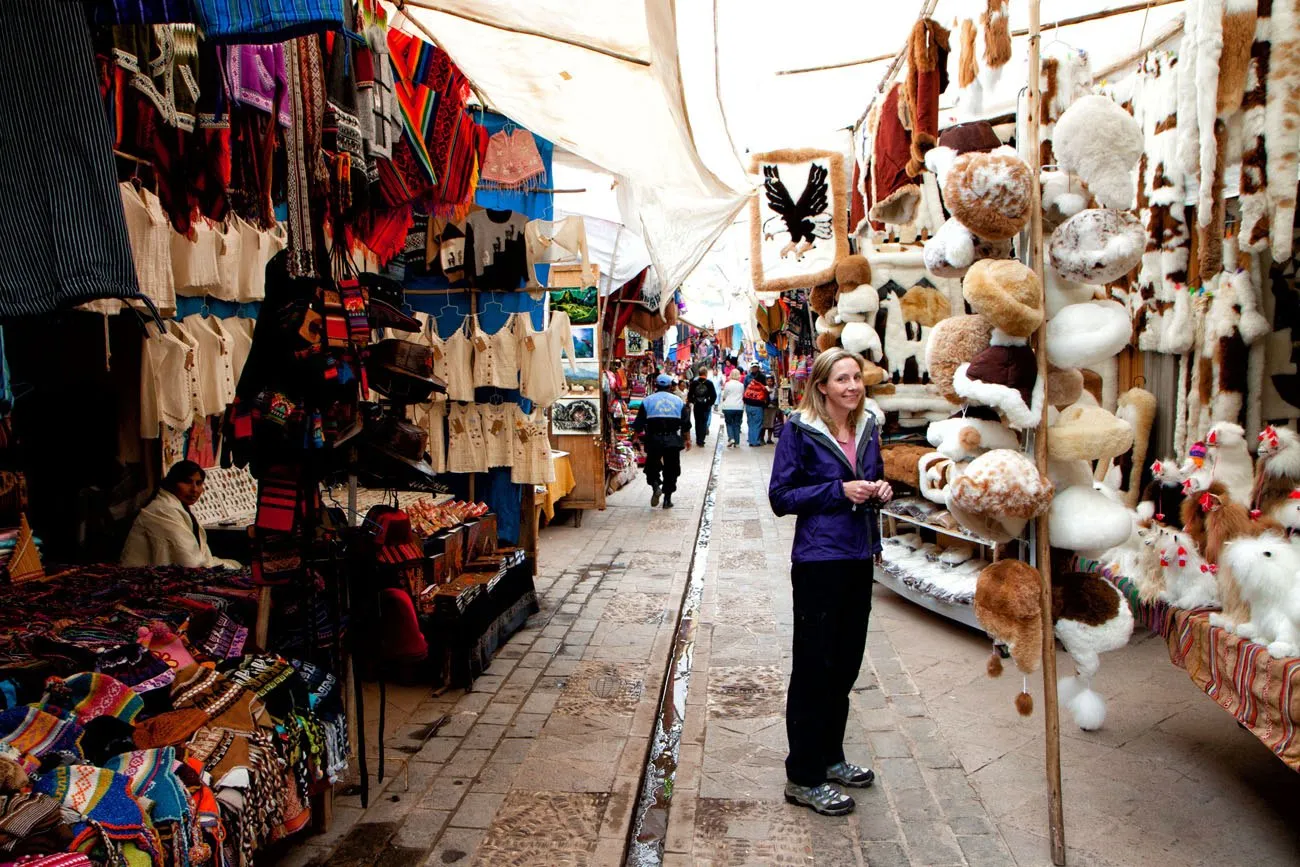


Wander the maze of shops, have lunch, and if you are here on Sunday, take a stroll through the market. While at lunch, try the coca leaf tea. Coca leaves are grown in Peru the tea helps to lessen the effects of altitude sickness.
LEARN MORE: Shopping at the Market in Pisac
Pisac Ruins (Parque Arqueologico de Pisaq)
This is where you get your first glimpse of ancient Incan ruins. These ruins sit on a hillside overlooking Pisac. Plan on spending about one hour here.
Take it easy walking up and down the hills, since you are at a higher elevation. Just walking uphill had me winded, and halfway up a flight of stairs I would have to stop to catch my breath.


Sacsayhuamán
Next up is Sacsayhuamán, ancient Incan ruins with a crazy name. The pronunciation of Sacsayhuamán is almost identical to “sexy woman,” which of course was great joke material for Tim.
Sacsayhuamán is an Incan fortress perched atop a hill overlooking Cusco. This was the site of a ten month battle between the Inca and the Spanish in the 1500’s that the Spanish eventually won.

What is so impressive about Sacsayhuamán is how these gigantic stones were carved so perfectly by the Incas and put together like a jigsaw puzzle. The stones are enormous, some much taller than Tim, with the largest stone weighing more than 126 tons! How did the Inca, with only the technology of copper and stone tools, carve and fit these gigantic rocks together so perfectly? It’s an impressive site to see.
Another impressive site is the view over Cusco.

Getting around: To get to Pisac, the Pisac Ruins, and Sacsayhuamán, we hired a driver through our hotel, the Rumi Punku. To get from Cusco to Pisac it takes 45 minutes to one hour.
Dinner in Cusco
End the day with dinner in Cusco. We recommend Cicciolina. This was our favorite restaurant of the entire trip (we ate here twice). The pisco sours are awesome, but you will have to wait until your return trip to Cusco later this week. Enjoy the food (we recommend the ceviche) but hold off on the alcohol to avoid altitude sickness.
Where We Stayed
The Rumi Punku Hotel. Rumi Punku in Quechua (the native language of Peru) means “Stone Gate.” The front door and the foundations of this hotel are the original Incan stonework from 600 years ago. We loved this hotel. It’s located just a few blocks from the heart of Cusco, the rooms are clean and comfortable, and the staff is amazing.

Peru Itinerary Day 3
Cusco and the Sacred Valley
Spend the morning exploring Cusco. Places to visit include Plaza de Armas (the main square), the Qorikiancha (the Inca’s Temple of the Sun), and the San Blas area (a maze of hilly, scenic streets).


Plaza de Armas

Qorikancha

San Blas
The afternoon will be spent exploring the Sacred Valley of Peru, ending in Ollantaytambo. We hired a driver through our hotel for this drive.
Chinchero
Chinchero is a small Andean village that sits at 12,000 feet elevation. It was here that got a lesson on weaving and did a little shopping. This is definitely geared towards tourists but we really enjoyed this visit. Tim and I were the only visitors and I had more opportunities to practice my Spanish. Plus, the blankets are gorgeous and this is a great spot to buy souvenirs to take home.


Our driver also took us on a brief tour of Chinchero while we were here. As you visit the Sacred Valley, you’ll learn that there are clusters of Incan ruins scattered throughout this part of Peru.
Urabamba Valley
The Urabamba Valley, a section of the Sacred Valley that sits between Chinchero and Ollantaytambo, is simply gorgeous. Enjoy the views!!


Ollantaytambo
Ollantaytambo is a small town filled with hostels, small hotels and restaurants, and a small market. This is the final stop on the road to Machu Picchu. From here it’s a two hour train ride to Machu Picchu.
Spend the afternoon exploring the fortress ruins of Ollantaytambo. It looks and feels like a thousand steps to get to the top of the fortress, but it’s worth it for these amazing views. Plus, you are at a lower elevation now (at about 9,000 feet) so the effects of the altitude are less here.



Where We Stayed
Sol Ollantay Hotel. This is a no-frills, nothing special hotel located in the center of Ollantaytambo. If you are a budget traveler, this is a hotel to consider.
We also stayed at Hotel Pakaritampu for 2 nights (days 5 and 6 of this Peru itinerary). This is lovely, boutique hotel just a few blocks outside of the heart of Ollantaytambo.
Peru Itinerary Day 4
Inca Trail to Machu Picchu
The Inca Trail is one of the world’s best multi-day hikes. It takes 4 days to walk the entire trail and visit Machu Picchu. On this itinerary, there is not enough time to walk the entire trail. Fortunately, for those short on time, there is a one-day Inca trail option. And that’s what you will do today
From Ollantaytambo, you will board the train to Aguas Calientes, getting off at km 104 to start your hike to Machu Picchu.

The one day hike takes you from the Urabamba River Valley, up and over several mountains, ending 15 km (9 miles) later at Machu Picchu. You get to walk the final section of the Inca Trail, visit lots of Incan ruins along the way, and enjoy the amazing view of Machu Picchu from the Sun Gate.
Some people say that the one day hike is not worth it, but we disagree. It’s a gorgeous hike and getting that first view from the Sun Gate, a place you reached with your own two feet, is much more special than hopping off of a bus and walking to a viewpoint. This one day hike still remains one of our favorite day hikes of all time.
In order to do this, you must hire a guide. We used Pie Experiences and had a good experience. Your tour company will book your train tickets, entrance tickets into Machu Picchu, accommodations in Aguas Calientes, and provide you with a hiking guide. I recommend booking this excursion six months in advance, since Machu Picchu is growing in popularity and many people want to have this same experience.
Hiking to Machu Picchu Along the Inca Trail
Our experience hiking the one day Inca Trail to Machu Picchu.Hiking to Machu Picchu
The 15 km (9 mile) hike takes most of the day. But what an awesome day it is. Here are some photos of what you will see along the hike.



We arrived at the Sun Gate at 3 pm. This first view of Machu Picchu was one of the highlights of the entire trip. To hike all day through these mountains and then have this view is really something special.
From the Sun Gate, you will hike down into Machu Picchu and have the opportunity to take more photos. It’s closing time, so you won’t have any time to explore today, but you will tomorrow!
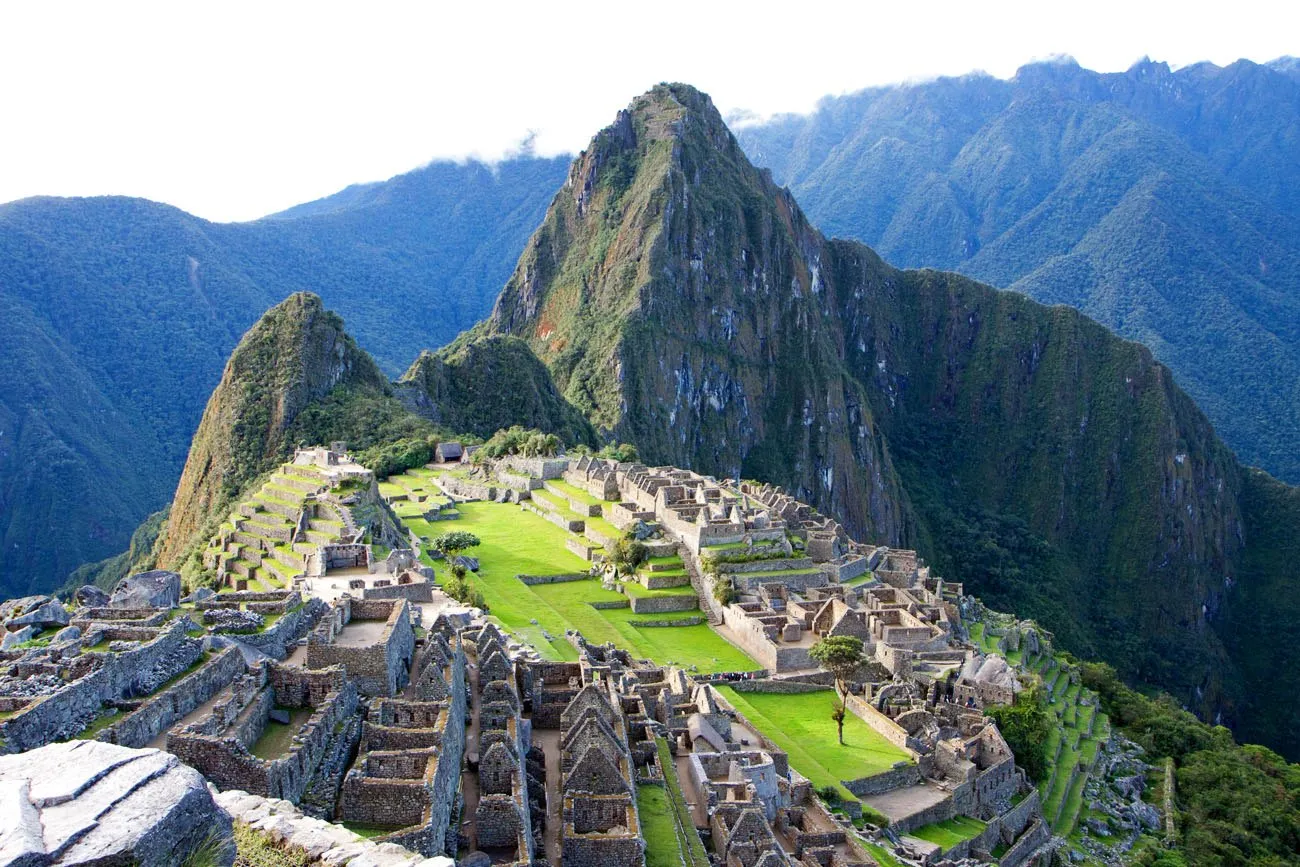
Take the bus down to Aguas Calientes, have dinner, and get a good night’s sleep. Tomorrow will be a busy day with an early start.
Where We Stayed
Rupa Wasi Lodge. This is a mid-range hotel in the center of town. The décor is nice but the hotel really wasn’t anything special. We didn’t have a bad experience, but I can’t say that I’d recommend it. Check it out on Trip Advisor but there are lots of other places to choose from. The best place in town is the Inkaterra Machu Picchu Pueblo Hotel.
Peru Itinerary Day 5
Machu Picchu
Rolling out of bed before sunrise can be painful. But it’s worth it today.
We did this trip in 2012, when the rules and regulations for visiting Machu Picchu were much different. At that time, a ticket to Machu Picchu allowed you to stay all day. In 2024, new rules for visiting Machu Picchu were put into affect and this article by Machu Picchu Gateway does a good job explaining the new time slots and circuits through Machu Picchu.

How Long Should You Spend at Machu Picchu?
We visited Machu Picchu several years ago, before visits were limited to different circuits through the site. I think it would be worth it to book two different circuits for one day, if that is allowed, to see as much of Machu Picchu as you can.
Is it worth visiting Machu Picchu for one full day? Absolutely. Tim and I usually grow bored of places rather quickly. For us, Machu Picchu was different. There is certain magic here, and we were just captivated by the views and splendor of Machu Picchu. Plus, with a full day, you can thoroughly explore Machu Picchu and spend some time getting away from the crowds at quieter, less visited areas.
Machu Picchu is open from 6 am to 5:00 pm. It may sound like a long day, but we recommend staying until closing time. During our visit, most people cleared out by 4 pm, which meant we got to wander through Machu Picchu with hardly anyone else around. That may be different now that there are shorter time slots to explore Machu Picchu.
LEARN MORE: Magical and Mystical Machu Picchu




Midday, you can have lunch at the Machu Picchu Sanctuary Lodge, located right outside of the entrance to Machu Picchu.
Huayna Picchu
While you are here, consider the climb up Huayna Picchu, the peak that forms the backdrop for all photos of Machu Picchu. The number of people allowed to climb per day is limited so your tickets need to be purchased well in advance of your visit. We were unable to do this climb, as our tour operator failed to order our tickets prior to our trip. It was a huge disappointment and a lesson learned (always double check to make sure your tour operator books your excursions). You can have your tour operator book this for you, or you can do this on your own.
Take an evening train back to Ollantaytambo and get settled into your hotel (we stayed at Hotel Pakaritampu).
Peru Itinerary Day 6
Zip Lining in the Sacred Valley
Today is a day that is just pure fun.
Natura Vive is a company that runs a via ferrata and zip line in the Sacred Valley. This was a first for Tim and I: our first time zip lining and our first time doing a via ferrata. And it was a perfect experience.
We spent about an hour and a half climbing up the rocky face of a mountain in the Urabamba River Valley. The higher we climbed, the better the views. We always felt perfectly safe, but there were enough tricky spots (tightropes and steep climbs), to really keep things interesting.



To get back down to the valley floor, you take a series of thrilling zip lines and one final rappel down the steepest section of the mountain.
This experience was a blast! Our guides, Jorge and Alfredo, were tons of fun. Seeing the valley while clinging to the side of a mountain was a huge thrill.
If you want the ultimate sleeping experience, consider spending the night in the Skylodge Adventure Suites, one of the glass pods that are attached to the mountain. This is a new addition since our visit and it looks awesome.
Tonight, sleep in the Skylodge Adventure Suites or in Ollantaytambo.
Peru Itinerary Day 7
Mountain Biking in the Sacred Valley (or the Rainbow Mountain of Peru)
You have a choice today: mountain biking in the Sacred Valley or making a day trip out to Vinicunca, the Rainbow Mountain of Peru. During our visit to Peru, the Rainbow Mountain was not a common thing to do. The popularity of this place has exploded in the past few years, thanks to Instagram. So even though we didn’t do it, I wanted to include it in this Peru itinerary, simply because it has become so popular.
Mountain Biking in the Sacred Valley
This is definitely not a popular thing to do. But if you like getting off the beaten path and enjoy biking, this is something to consider. For us, it became one of the most memorable days of our visit to Peru.
We spent the day with Gravity Peru, a small company that takes people on mountain bike trips through the Sacred Valley. Our guide, Chet, picked us up at our hotel and drove us to Moray, where we would start our next adventure of the trip.
Moray is another popular Incan ruin to visit in the Sacred Valley.

For the next several hours, Chet led us through small towns and farms in the Sacred Valley. We got a much closer look at Peruvian rural life than if we had driven through this area in a car. Along the way, we ate lunch in Maras and visited the salt mines in Salineras.


Most of the journey is downhill, so it’s not overly strenuous. However, we were using downhill mountain bikes, bikes that are heavy and can be a little difficult to control, especially if you are not used to them. Tim and I have lots of experience road biking but this is something entirely different. I felt a little in over my head, trying to navigate this heavy bike down winding, rocky trails.
And then, I wiped out. It wasn’t a bad fall, but I hit my hand just right, enough to fracture one of the bones in my left hand. Fortunately, we were almost done, so we ended up walking my bike back to the car.

Fortunately, we were also heading back to Cusco. Tim and I spent the rest of the day at a clinic, where I got x-rays and had a plaster cast put on my hand. Sure, breaking my hand was a bummer, but what an experience, going to a clinic in Peru! Since I work in orthopedics I found the entire experience fascinating. And now I had an unexpected Peruvian souvenir…a plaster cast and a crazy memory.
Our day ended back at Cicciolina, and now, since we were acclimated with the altitude, we could have as many pisco sours as we wanted to.
Rainbow Mountain Day Trip
The Rainbow Mountain (Vinicunca) is located 140 km southeast of Cusco. You can visit Rainbow Mountain on a long day trip from Cusco. Most tours will pick you up from your hotel in Cusco at 2:30 to 3:30 am (that is not a typo…your day will start in the early morning hours) and return to Cusco between 6:30 to 7:30 pm. Seeing the Rainbow Mountain requires a rather strenuous hike at 16,500 feet, so it is a challenging day. But those who do it say it’s a phenomenal experience.
In order to do this on this itinerary, return to Cusco at the end of day 6, after zip lining. Then, you will spend all day today on the trip to the Rainbow Mountain.
If this is something you are interested in doing, check out these tours on GetYourGuide.
Rainbow Mountain Tours
Tonight you will sleep in Cusco.
Peru Itinerary Day 8
The Amazon
Today it is time to say goodbye to Cusco and the Andes Mountains for an altogether different landscape…the Amazon rainforest.
Take an early morning flight from Cusco to Puerto Maldonado. It’s another short, scenic flight. The landscape quickly changes from rugged mountains to a flat forest basin, bright green in color, with rivers snaking through the rainforest.
As soon as you step off the airplane, the hot, muggy air envelopes you. What a difference from the cool, dry air of the Andes Mountains.
Your destination is the Tambopata National Reserve, a nature reserve in the Peruvian Amazon basin and one of the most accessible parts of the Amazon from Cusco.
There are a small number of hotels and tour operators that offer package tours to this part of the Amazon. We chose the Inkaterra Reserva Amazonica because they got rave reviews, not only for their accommodations but also for their food and their excursions.
Inkaterra Reserva Amazonica
At the airport, we were greeted by one of the Inkaterra staff members. It was a short truck ride to the Madre de Dios River, our route into the Amazon rainforest. Tim and I boarded a small, wooden boat and were taken 45-minutes downstream to the Inkaterra Reserva Amazonica.


For two nights you will stay in a cabana, which is really just a nice screened-in porch with a bed, bathroom, and small living area. From our cabana we could look out over the Madre de Dios River. Neon green parakeets take over the nearby trees during the day.
At the Inkaterra, all of your meals are provided and the food is phenomenal. In order to save energy, the power is turned off during the afternoon hours and then again at nighttime. There is no air-conditioning, and it can be an adjustment, getting used to the hot, oppressive, sticky air.
The Inkaterra has a number of excursions to choose from, depending on how active you want to be. On our first day, we took a one hour tour into the rainforest, learning about the trees, termites, birds, and the local wildlife.
At sunset, we took their Twilight River Excursion, looking for caiman in the Madre de Dios River. We did get to see a few caiman, but what was more memorable was the feeling like we were in the middle of nowhere. Here we were, out in a small boat in the Amazon, looking for alligators, and feeling far, far away from home. It was wonderful.
LEARN MORE: An Introduction to the Amazon Rainforest
Peru Itinerary Day 9
The Amazon
Continue your exploration of the rainforest. We spent the first part of the day on an excursion to Lake Sandoval, a guided walk through the rainforest and a canoe trip around the lake. We got to see spider monkeys, howler monkeys, leaf cutter ants, birds, tarantulas, and capuchin monkeys.


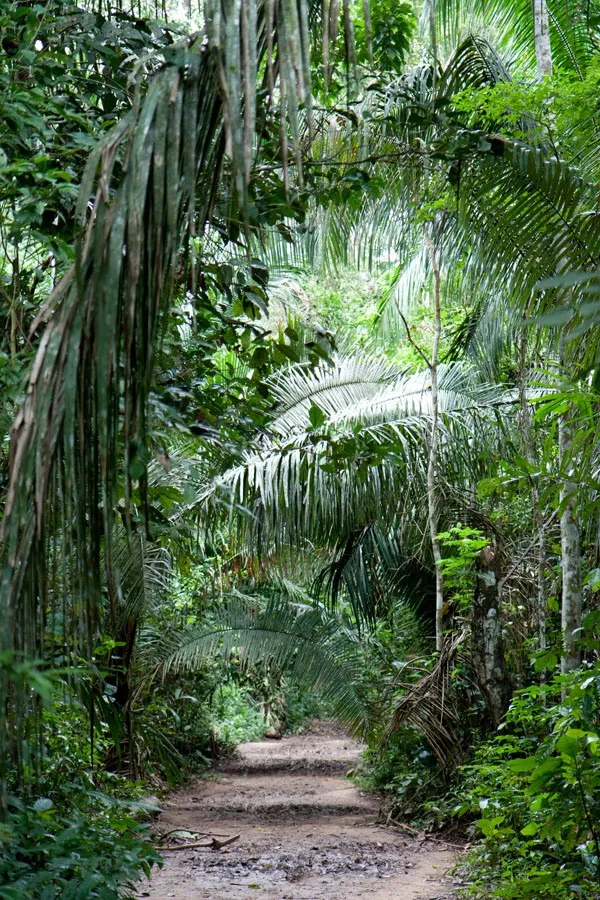
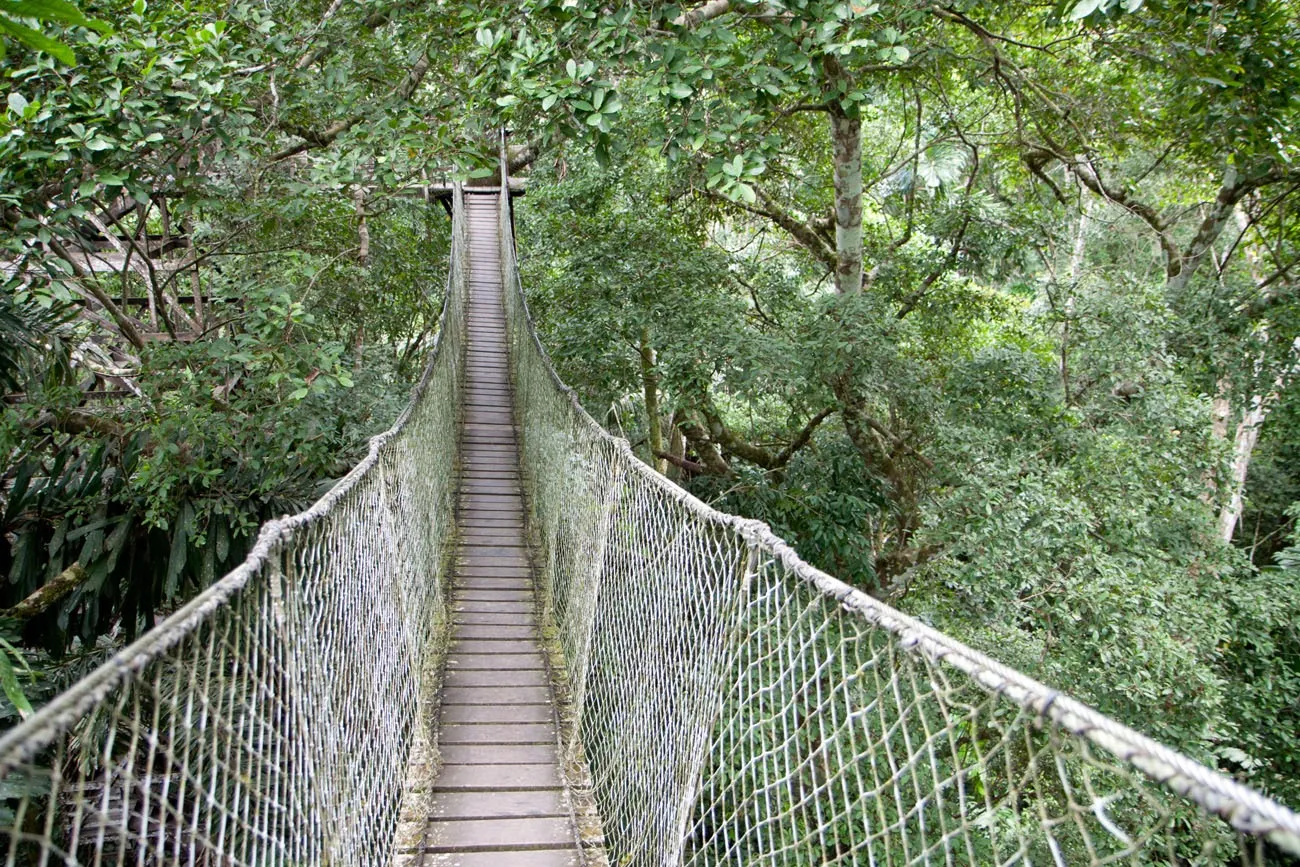
In the afternoon, we went on a tour of the canopy bridges in the trees of the Inkaterra. It was awesome seeing the jungle from this vantage point.
Our last excursion of the day was a one hour nighttime walk in the forest. Talk about freaky! Our guide, Wilson, was searching for snakes, but we never got lucky (or maybe we did, depending on how much you want to see a snake). But Wilson did show us the tarantula that sleeps in the tree right outside of our cabana. That’s probably not the thing you want to see right before bedtime!
The Inkaterra offers many more excursions and part of the fun is picking out what interests you the most. Our favorite was the canopy tour.
Peru Itinerary Day 10
Fly Home or Continue Your Journey
Today you will begin your journey home. Most likely, you will fly from Puerto Maldonado to Cusco to Lima to your hometown. Or, for those with more time, continue your journey.
With More Time
If you have several more days or longer, consider adding these places to your Peru itinerary:
- Add a few more days and walk the entire Inca Trail
- Lake Titicaca
- Arequipa
- Colca Canyon
- Chan Chan Archeological Zone
- The Nazca Lines
- Sandboarding in Huacachina
- Hiking in the Cordillera Blanca
Best Time to Go to Peru
May through October, the dry season, is the best time to visit Peru. The peak months for tourism are July and August, so expect large crowds and higher prices for food and accommodations. For that reason, May and September are great months to visit Peru.
November through April is the rainy season. The Inca trail can be downright soggy during these months. The Inca trail is closed every February for maintenance of the trail.
We visited Peru the last week of April into early May, taking a chance with the weather. We had some cloudy days and we flew out of the Amazon during a torrential downpour, but otherwise, the weather was perfect. Since this was shoulder season, crowds were low and we had many spots all to ourselves. Our guides kept telling us what a great decision we made to visit Peru before peak season.
Vaccinations
The CDC and WHO recommends you have the following recommendations if you are traveling to Peru:
- Yellow Fever
- Typhoid
- Hepatitis A
- Hepatitis B
- Rabies
- COVID-19
We were vaccinated for all of the above (Yellow Fever, Hepatitis A & B, and typhoid) but not rabies.
Malaria is present in the Amazon, so you will need to take prophylactic anti-malarial medication. We took Malarone because of its low side effect profile, but there are many options.
Dengue Fever, Zika Virus, and Chikungunya have also been reported in Peru. Make sure you use insect repellent if you are visiting the Amazon or if you are visiting Peru during the wet season.
For more information, visit the CDC website.
Tips to Have the Best Experience
Traveler’s Diarrhea
You can get traveler’s diarrhea in Peru. To reduce your risk, only drink bottled water. Do not drink tap water or use ice made from tap water. Only eat fruit and vegetables that you have washed in purified water.
Altitude Sickness (Soroche)
When you arrive in Cusco, you will immediately feel the effects of being at a high altitude (11,152 feet, 3,399 meters). Symptoms can include fatigue, headache, shortness of breath, dizziness, lack of appetite, or in severe cases, vomiting. For most people the symptoms are mild and nothing more than a nuisance.
To lessen the effects of the altitude, there are several things you can do. Stay hydrated, avoid alcohol, and keep your activity to a minimum. Drinking coca leaf tea helps a lot, but avoid doing this late in the day because it can make it difficult to fall asleep at night. You can also take Diamox, a diuretic that helps combat the symptoms of altitude sickness. You will need to get this from your doctor before traveling to Peru.
Bring Ear Plugs
In Lima and in Cusco, dogs roam the streets. They seem to sleep the day away and then end up howling throughout the night. If you are a light sleeper, bring ear plugs!
Learn at Least a Few Sentences of Spanish
You can travel through Peru without knowing one word of Spanish and get along fine. However, if you really want to engage with the people and be able to travel off of the main tourist trail, knowing Spanish is key.
I am not fluent in Spanish, but I can speak and understand enough to talk to taxi drivers, order in restaurants, and have short conversations. Speaking a little bit of Spanish opened us up to experiences with people that we wouldn’t have had if I only spoke English. I highly recommend learning at least a few sentences before you arrive in Peru.
If you want to learn a language, Fluenz is an awesome tool that teaches you the basics all of the way to fluency. Most programs have 5 levels. One level is enough to learn the basics and to be able to converse with people when you travel. I have used Fluenz to learn basic Spanish, French, German, and even Mandarin. If you want to learn more, visit the Fluenz website.
Recommended Reading Before You Go
If you want to do some reading before your trip to Peru, here are several books to help you understand the history of the Incan people, the history behind Machu Picchu, and how to decipher a menu. Turn Right at Machu Picchu is a wonderful book and a worthwhile read even if you don’t visit Machu Picchu. The Last Days of the Incas is an eye-opening historical account of the Incan Empire and their downfall with the arrival of the Europeans.
Do you have any questions about this Peru itinerary? Comment below!
More Information for Your Trip to Peru











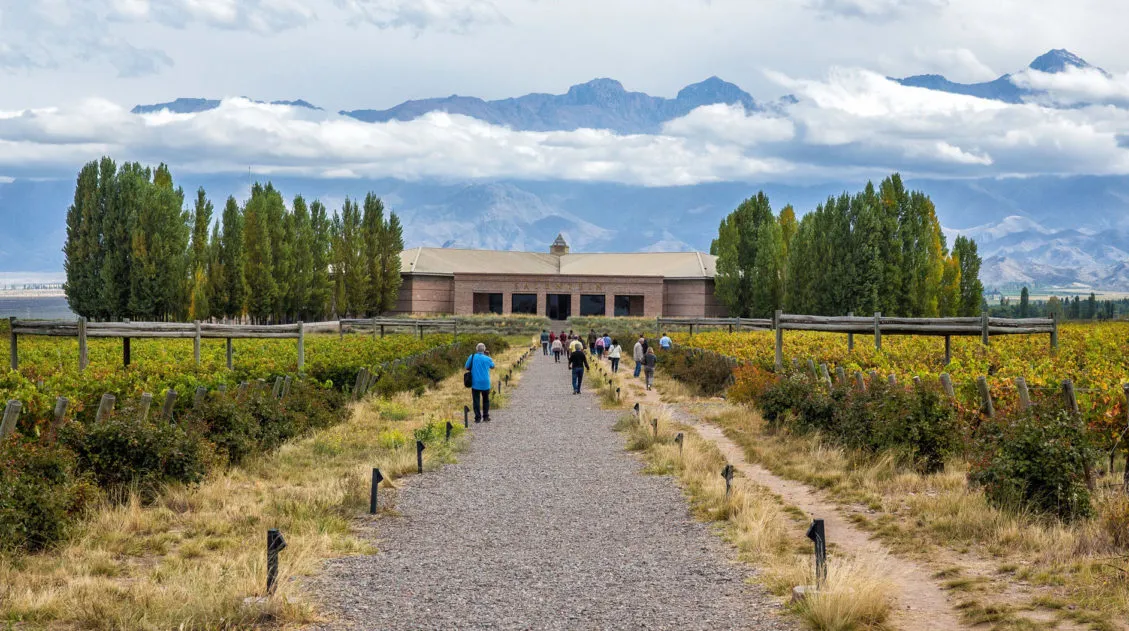

Comments 81